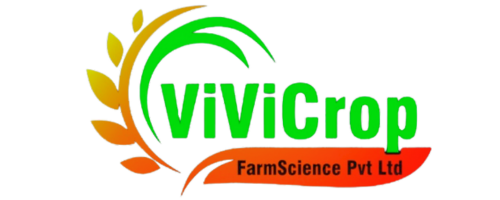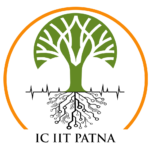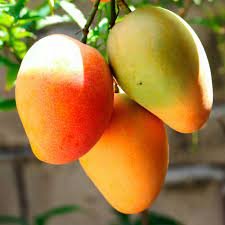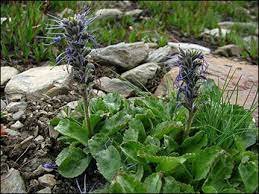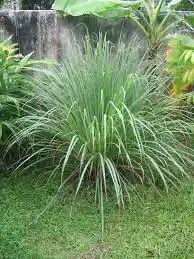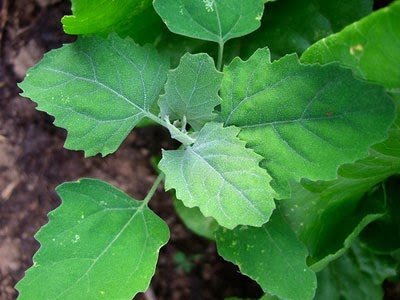Onion (Allium cepa) Nutrition Requirements
Nutrition required by Onion (Allium cepa) at each stage of its life cycle.
SOIL PREPARATION
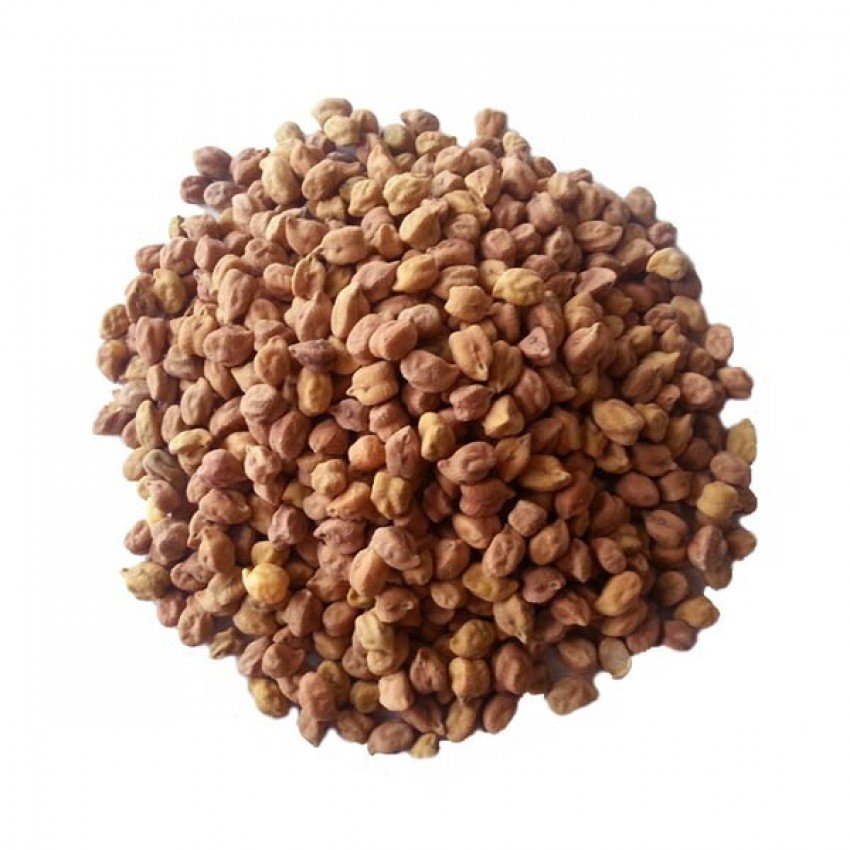
Soil Preparation
The soil preparation method and nutrition requirements during the soil preparation stage for onion cultivation are crucial for establishing healthy plants and maximizing yield potential.
Here's a guide:
Soil Preparation Method:
1. Site Selection:
Choose a well-drained, sunny location with loose, friable soil for onion cultivation.
2. Soil Testing:
Conduct a soil test to determine the pH and nutrient levels of the soil. Onions prefer slightly acidic soil with a pH between 6.0 and 7.0.
3. Soil Amendment:
Based on the soil test results, amend the soil as needed to adjust pH and improve fertility. Add lime to raise pH if it's too acidic, or sulfur to lower pH if it's too alkaline. Incorporate organic matter such as compost or well-rotted manure to improve soil structure and fertility.
4. Tillage:
Till the soil to a depth of 6-8 inches to loosen compaction and improve aeration. Remove weeds and debris from the planting area.
5. Bed Preparation:
Create raised beds or ridges to improve drainage and prevent waterlogging. Beds should be 4-6 inches high and 30-36 inches wide, with 12-18 inches between rows.
6. Fertilization:
Apply a balanced fertilizer according to soil test recommendations or based on general guidelines. Incorporate fertilizer into the soil during bed preparation to ensure even distribution of nutrients.
7. Irrigation:
Ensure proper irrigation by providing a consistent supply of moisture to the soil. Onions require adequate moisture, especially during the early stages of growth, but avoid overwatering to prevent waterlogging.
Nutrition Requirements:
1. Macronutrients:
- Nitrogen (N):
Onions have moderate nitrogen requirements, especially during early growth stages. Apply nitrogen fertilizer based on soil test recommendations or use a balanced fertilizer with a higher nitrogen content (e.g., 10-10-10) at a rate of 1-2 pounds per 100 square feet.
- Phosphorus (P) and Potassium (K): Phosphorus and potassium are essential for root development, bulb formation, and overall plant health. Apply phosphorus and potassium fertilizers based on soil test recommendations or use a balanced fertilizer with a higher phosphorus and potassium content (e.g., 10-20-20) at planting.
2. Micronutrients:
- Onions require trace amounts of micronutrients such as iron, manganese, zinc, and copper for optimal growth and development. Incorporate micronutrient fertilizers or use a balanced fertilizer containing micronutrients to ensure adequate supply.
3. Organic Matter:
- Incorporate organic matter such as compost or well-rotted manure into the soil during bed preparation to improve soil fertility, structure, and moisture retention.
4. pH:
- Maintain soil pH within the optimal range of 6.0 to 7.0 for onion cultivation. Adjust soil pH as needed using lime or sulfur based on soil test recommendations.
5. Mulching:
- Apply a layer of organic mulch such as straw or shredded leaves to conserve soil moisture, suppress weed growth, and regulate soil temperature.
By following these soil preparation methods and meeting the nutrition requirements, you can create an optimal growing environment for onions, leading to healthy plants and high yields. Regular monitoring of soil fertility and plant health is essential for adjusting nutrient management practices as needed throughout the growing season.
Early Growth (Germination to Establishment)

Early Growth
During the early growth stage of onions (from germination to establishment), providing the right balance of nutrients is crucial for promoting healthy seedling development and establishing vigorous plants.
Here are the key nutrition requirements for onions during this stage:
1. Macronutrients:
- Nitrogen (N):
Onions have moderate nitrogen requirements during the early growth stage to support vegetative growth and leaf development. Apply nitrogen fertilizer at a rate of 20-30 pounds per acre, or based on soil test recommendations, to ensure adequate nitrogen availability.
- Phosphorus (P) and Potassium (K):
Phosphorus and potassium are essential for root development and overall plant vigor. Apply phosphorus and potassium fertilizers at planting or incorporate them into the soil before seeding to support early root establishment and growth.
2. Micronutrients:
- Onions require trace amounts of micronutrients such as iron (Fe), manganese (Mn), zinc (Zn), and copper (Cu) for optimal growth and development during the early stages. Ensure soil micronutrient levels are adequate, or consider applying micronutrient fertilizers if deficiencies are detected.
3. Organic Matter:
- Incorporate organic matter such as compost or well-rotted manure into the soil before planting to improve soil fertility, structure, and moisture retention. Organic matter also provides a slow-release source of nutrients for seedling growth.
4. Soil pH:
- Maintain soil pH within the optimal range of 6.0 to 7.0 for onions. Adjust soil pH as needed using lime or sulfur based on soil test recommendations to ensure optimal nutrient availability for seedling growth and establishment.
5. Water:
- Provide adequate soil moisture to support seed germination and seedling establishment. Onions require consistent moisture during the early growth stage, so monitor soil moisture levels regularly and irrigate as needed to prevent stress.
6. Seed Treatment:
- Consider treating onion seeds with a fungicide or biofungicide to protect against soilborne diseases and promote healthy seedling emergence. Follow label instructions carefully when applying seed treatments.
By meeting these nutrition requirements during the early growth stage, you can promote healthy seedling development, root establishment, and overall vigor in onion plants. Regular monitoring of soil fertility, pH, and moisture levels is essential for adjusting nutrient management practices as needed to support optimal growth and establishment during this critical stage.
Tillering Stage (Shoot Development)

Tillering Stage
During the tillering stage of onion growth (shoot development), the plants focus on developing foliage and establishing a strong vegetative structure. Meeting the nutrition requirements during this stage is essential for promoting healthy shoot development and preparing the plants for bulb formation.
Here are the key nutrition requirements for onions during the tillering stage:
1. Macronutrients:
- Nitrogen (N):
Onions have a high demand for nitrogen during the tillering stage to support vigorous vegetative growth and foliage development. Apply nitrogen fertilizer at a rate of 50-100 pounds per acre, or based on soil test recommendations, to meet the plants' nitrogen requirements during this stage.
- Phosphorus (P) and Potassium (K):
Phosphorus and potassium are essential for overall plant health and vigor. Ensure adequate levels of phosphorus and potassium in the soil to support shoot development and nutrient uptake during the tillering stage.
2. Micronutrients:
- Onions require trace amounts of micronutrients such as iron (Fe), manganese (Mn), zinc (Zn), and copper (Cu) for optimal growth and development during the tillering stage. Monitor soil micronutrient levels and consider applying micronutrient fertilizers if deficiencies are detected.
3. Organic Matter:
- Maintain soil fertility and structure by incorporating organic matter such as compost or well-rotted manure into the soil before planting or as a topdressing during the tillering stage. Organic matter provides a slow-release source of nutrients and improves soil health.
4. Soil pH:
- Ensure soil pH remains within the optimal range of 6.0 to 7.0 for onions during the tillering stage. Adjust soil pH as needed using lime or sulfur based on soil test recommendations to optimize nutrient availability for shoot development and growth.
5. Water:
- Provide consistent soil moisture to support healthy shoot development and foliage growth during the tillering stage. Onions require adequate water to maintain turgor pressure and promote nutrient uptake. Monitor soil moisture levels regularly and irrigate as needed to prevent stress.
6. Fertilizer Application:
- Apply additional nitrogen fertilizer as needed during the tillering stage to meet the plants' increased demand for nitrogen. Split nitrogen applications can help ensure continuous nutrient availability and promote optimal shoot development.
By meeting these nutrition requirements during the tillering stage, you can promote vigorous shoot development and establish a strong vegetative structure in onion plants, setting the stage for successful bulb formation and yield. Regular monitoring of soil fertility, pH, and moisture levels is essential for adjusting nutrient management practices as needed to support optimal growth and development during this critical stage.
Flowering

Flowering
During the flowering stage of onion growth, the plants focus on reproductive development, including the formation of flower stalks and the transition to bulb formation. Meeting the nutrition requirements during this stage is crucial for supporting flower development and setting the stage for bulb formation.
Here are the key nutrition requirements for onions during the flowering stage:
1. Macronutrients:
- Nitrogen (N):
Onions have reduced nitrogen requirements during the flowering stage compared to earlier growth stages. Excessive nitrogen levels can delay bulb formation and lead to overly lush foliage at the expense of bulb development. Reduce nitrogen fertilizer applications during the flowering stage to avoid these issues.
- Phosphorus (P) and Potassium (K):
Phosphorus and potassium are essential for supporting flower development and reproductive processes in onions. Maintain adequate levels of phosphorus and potassium in the soil to support optimal flowering and bulb formation.
2. Micronutrients:
- Onions require trace amounts of micronutrients such as iron (Fe), manganese (Mn), zinc (Zn), and copper (Cu) for flower development and reproductive processes. Monitor soil micronutrient levels and consider applying micronutrient fertilizers if deficiencies are detected.
3. Organic Matter:
- Maintain soil fertility and structure during the flowering stage by incorporating organic matter such as compost or well-rotted manure into the soil. Organic matter provides a slow-release source of nutrients and improves soil health, supporting flower development and reproductive processes.
4. Soil pH:
- Ensure soil pH remains within the optimal range of 6.0 to 7.0 for onions during the flowering stage. Adjust soil pH as needed using lime or sulfur based on soil test recommendations to optimize nutrient availability for flower development and bulb formation.
5. Water:
- Provide consistent soil moisture to support healthy flower development and reproductive processes during the flowering stage. Onions require adequate water to promote flower formation and bulb development. Monitor soil moisture levels regularly and irrigate as needed to prevent stress.
By meeting these nutrition requirements during the flowering stage, you can support healthy flower development and reproductive processes in onion plants, setting the stage for successful bulb formation and yield. Regular monitoring of soil fertility, pH, and moisture levels is essential for adjusting nutrient management practices as needed to support optimal growth and development during this critical stage.
Matchuration & Ripening

Matchuration & Ripening
During the maturation and ripening stage of onion growth, the plants focus on completing bulb development and reaching maturity for harvest. Meeting the nutrition requirements during this stage is crucial for promoting bulb enlargement, enhancing bulb quality, and maximizing yield.
Here are the key nutrition requirements for onions during the maturation and ripening stage:
1. Macronutrients:
- Nitrogen (N):
Onions have reduced nitrogen requirements during the maturation and ripening stage compared to earlier growth stages. Excessive nitrogen levels during this stage can delay bulb maturation and lead to storage issues. Reduce nitrogen fertilizer applications during the maturation and ripening stage to promote bulb ripening and enhance storage quality.
- Phosphorus (P) and Potassium (K):
Phosphorus and potassium are essential for supporting bulb enlargement, enhancing bulb quality, and promoting bulb ripening during the maturation and ripening stage. Maintain adequate levels of phosphorus and potassium in the soil to support optimal bulb development and ripening.
2. Micronutrients:
- Onions require trace amounts of micronutrients such as iron (Fe), manganese (Mn), zinc (Zn), and copper (Cu) for bulb development, ripening, and storage quality. Monitor soil micronutrient levels and consider applying micronutrient fertilizers if deficiencies are detected.
3. Organic Matter:
- Maintain soil fertility and structure during the maturation and ripening stage by incorporating organic matter such as compost or well-rotted manure into the soil. Organic matter provides a slow-release source of nutrients and improves soil health, supporting bulb development and ripening.
4. Soil pH:
- Ensure soil pH remains within the optimal range of 6.0 to 7.0 for onions during the maturation and ripening stage. Adjust soil pH as needed using lime or sulfur based on soil test recommendations to optimize nutrient availability for bulb development and ripening.
5. Water:
- Provide consistent soil moisture during the maturation and ripening stage to support bulb enlargement, ripening, and storage quality. Onions require adequate water to promote bulb development and ripening. Monitor soil moisture levels regularly and irrigate as needed to prevent stress.
By meeting these nutrition requirements during the maturation and ripening stage, you can promote optimal bulb enlargement, enhance bulb quality, and maximize yield in onion plants. Regular monitoring of soil fertility, pH, and moisture levels is essential for adjusting nutrient management practices as needed to support optimal growth and development during this critical stage.
Harvesting

Harvesting
During the harvesting stage of onion (Allium cepa) cultivation, there are no specific nutrition requirements as the plant is typically harvested for its bulbs rather than its foliage. However, proper management practices are crucial to ensure the quality and yield of onions.
Here are the nutrition requirements and procedures to be followed at the harvesting stage for onions:
1. **Timing of Harvesting:**
- Onions are ready for harvest when the foliage turns yellow and begins to bend or fall over.
- The bulbs should be mature, firm, and have developed a papery outer skin.
2. **Harvesting Method:**
- Onions are typically harvested by hand or using mechanical equipment such as a tractor-drawn onion harvester.
- Hand harvesting involves lifting the onions from the soil and gently shaking off excess soil. Care should be taken to avoid bruising or damaging the bulbs.
3. **Curing Process:**
- After harvesting, onions undergo a curing process to prepare them for storage and improve their shelf life.
- Curing involves drying the onions in a well-ventilated, shaded area with good air circulation for several days to several weeks, depending on the climate and storage conditions.
- The curing process allows the outer layers of the onion bulbs to dry and the necks to shrink, sealing the bulbs and reducing the risk of rot during storage.
4. **Trimming and Cleaning:**
- After curing, the tops and roots of the onions are trimmed to about 1 inch (2.5 cm) long using pruning shears or a sharp knife.
- The outer dry layers of the bulbs are carefully removed to clean the onions and improve their appearance.
5. **Storage:**
- Once trimmed and cleaned, the onions are stored in a cool, dry, and well-ventilated area with good air circulation.
- Onions should be stored in mesh bags, crates, or ventilated bins to allow air to circulate around the bulbs and prevent moisture buildup.
6. **Post-Harvest Management:**
- After harvesting and curing, it's essential to clean and sanitize the harvesting tools and equipment to prevent the spread of diseases and pests.
- Proper sanitation practices should be followed throughout the curing, trimming, and storage process to maintain the quality of the onions.
By following these procedures during the harvesting stage, you can ensure the production of high-quality onions with good storage characteristics and extended shelf life.
Onion (Allium cepa) Farming Economics
Get details of Profitability and cost estimate in growing Onion (Allium cepa) per acres of Land.
SOIL PREPARATION

Soil Preparation
Early Growth (Germination to Establishment)

Early Growth
Tillering Stage (Shoot Development)

Tillering Stage
Flowering

Flowering
Matchuration & Ripening

Matchuration & Ripening
Harvesting

Harvesting
Onion (Allium cepa) Disease Details
Nutrition required by Onion (Allium cepa) at each stage of its life cycle.
SOIL PREPARATION

Soil Preparation
During the soil preparation stage for onion cultivation, several diseases and pests can affect onion plants, potentially causing issues throughout the growing season.
Here are some common diseases and pests that can occur at the soil preparation stage, along with precautions to prevent them:
1. Damping-off:
- Damping-off is a fungal disease that affects onion seedlings, causing them to rot at the soil line and collapse. It is often caused by overly wet or poorly drained soil conditions.
Precautions:
- Ensure proper soil drainage by preparing raised beds or ridges for planting onions.
- Avoid overwatering and maintain optimal soil moisture levels to prevent excessive soil moisture, which can promote damping-off.
- Use disease-free planting material and treat seeds with fungicides if damping-off is a known issue in the area.
2. Onion Smut (Urocystis cepulae):
- Onion smut is a fungal disease that affects onion bulbs, causing black, powdery spore masses on the outer layers of the bulb. It can survive in the soil for several years.
Precautions:
- Plant disease-resistant onion varieties when possible.
- Practice crop rotation to avoid planting onions in the same area where smut has occurred in the past.
- Avoid planting infected sets or bulbs, as they can introduce the disease to the soil.
3. Onion Maggots (Delia antiqua):
- Onion maggots are small white larvae that feed on onion roots, leading to stunted growth and reduced yield. They are particularly problematic in soils with high organic matter content.
Precautions:
- Use row covers or insect netting to prevent adult flies from laying eggs near onion plants.
- Practice crop rotation to reduce the buildup of onion maggot populations in the soil.
- Monitor onion plants regularly for signs of maggot infestation and apply insecticides if necessary.
4. Weeds:
- Weeds compete with onion plants for nutrients, water, and sunlight, leading to reduced yield and quality.
Precautions:
- Remove weeds from the planting area before preparing the soil for onion cultivation.
- Use mulch or weed barriers to suppress weed growth and conserve soil moisture during the growing season.
- Hand-weed or use mechanical weed control methods to manage weed populations as needed.
By implementing these precautions during the soil preparation stage, you can minimize the risk of diseases and pests in onion cultivation, promoting healthy plant growth and maximizing yield potential. Regular monitoring and proper sanitation practices are essential for managing potential disease and pest issues throughout the growing season.
Early Growth (Germination to Establishment)

Early Growing
During the early growth stage of onions (from germination to establishment), several diseases and pests can affect onion seedlings, potentially causing issues throughout the growing season.
Here are some common diseases and pests that can occur at the early growth stage, along with precautions to prevent them:
1. Damping-off:
- Damping-off is a fungal disease that affects onion seedlings, causing them to rot at the soil line and collapse. It is often caused by overly wet or poorly drained soil conditions.
Precautions:
- Ensure proper soil drainage by preparing raised beds or ridges for planting onions.
- Avoid overwatering and maintain optimal soil moisture levels to prevent excessive soil moisture, which can promote damping-off.
- Use disease-free planting material and treat seeds with fungicides if damping-off is a known issue in the area.
2. Onion Downy Mildew (Peronospora destructor):
- Onion downy mildew is a fungal disease that affects onion foliage, causing yellowing and wilting of leaves. It thrives in cool, humid conditions.
Precautions:
- Plant onion varieties that are resistant to downy mildew when possible.
- Avoid planting onions in low-lying areas with poor air circulation, as these conditions can promote the development of downy mildew.
- Apply fungicides preventatively if downy mildew is a known issue in the area, following label instructions carefully.
3. Onion Maggots (Delia antiqua):
- Onion maggots are small white larvae that feed on onion roots, leading to stunted growth and reduced yield. They are particularly problematic in soils with high organic matter content.
Precautions:
- Use row covers or insect netting to prevent adult flies from laying eggs near onion plants.
- Practice crop rotation to reduce the buildup of onion maggot populations in the soil.
- Monitor onion plants regularly for signs of maggot infestation and apply insecticides if necessary.
4. Thrips:
- Thrips are tiny, slender insects that feed on onion foliage, causing silvery streaks and distortion of leaves. They can transmit viral diseases to onion plants.
Precautions:
- Monitor onion plants regularly for signs of thrips infestation, including silvery streaks on leaves.
- Use insecticidal soap or neem oil to control thrips populations if necessary, following label instructions carefully.
By implementing these precautions during the early growth stage, you can minimize the risk of diseases and pests in onion cultivation, promoting healthy plant growth and maximizing yield potential. Regular monitoring and proper sanitation practices are essential for managing potential disease and pest issues throughout the growing season.
Tillering Stage (Shoot Development)

Tillering Stage
During the tillering stage (shoot development) of onion growth, several diseases and pests can affect onion plants, potentially causing issues throughout the growing season.
Here are some common diseases and pests that can occur at the tillering stage, along with precautions to prevent them:
1. Fusarium Basal Rot (Fusarium oxysporum):
- Fusarium basal rot affects onion plants at the base of the bulb, leading to rotting and collapse of the plant. It is caused by the fungal pathogen Fusarium oxysporum.
Precautions:
- Practice crop rotation to avoid planting onions in fields where Fusarium basal rot has occurred in the past.
- Use disease-free planting material and treat seeds or sets with fungicides if Fusarium basal rot is a known issue in the area.
- Ensure proper soil drainage and avoid overwatering to reduce the risk of Fusarium basal rot.
2. Pink Root (Phoma terrestris):
- Pink root is a fungal disease that affects onion roots, causing them to turn pink or reddish-brown and become stunted. It is caused by the pathogen Phoma terrestris.
Precautions:
- Plant disease-resistant onion varieties when possible.
- Practice crop rotation to reduce the buildup of pink root pathogens in the soil.
- Improve soil drainage and avoid overwatering to prevent the development of pink root.
3. Onion Thrips (Thrips tabaci):
- Onion thrips are tiny insects that feed on onion foliage, causing silvery streaks and distortion of leaves. They can transmit viral diseases to onion plants.
Precautions:
- Monitor onion plants regularly for signs of thrips infestation, including silvery streaks on leaves.
- Use insecticidal soap or neem oil to control thrips populations if necessary, following label instructions carefully.
- Implement cultural practices such as removing weeds and improving plant spacing to reduce thrips habitat.
4. Onion White Rot (Sclerotium cepivorum):
- Onion white rot is a fungal disease that affects onion roots and bulbs, causing white, fluffy growth on affected tissues. It is caused by the pathogen Sclerotium cepivorum.
Precautions:
- Practice crop rotation with non-host crops such as grains or grasses to reduce the risk of white rot.
- Avoid planting onions in areas where white rot has occurred in the past.
- Remove and destroy infected plant material to prevent the spread of white rot.
By implementing these precautions during the tillering stage, you can minimize the risk of diseases and pests in onion cultivation, promoting healthy plant growth and maximizing yield potential. Regular monitoring and proper sanitation practices are essential for managing potential disease and pest issues throughout the growing season.
Flowering

Flowering
During the flowering stage of onion growth, the plants are vulnerable to several diseases and pests that can affect bulb development and overall plant health.
Here are some common diseases and pests that can occur at the flowering stage, along with precautions to prevent them:
1. Onion Downy Mildew (Peronospora destructor):
- Onion downy mildew is a fungal disease that affects onion foliage, causing yellowing and wilting of leaves. It thrives in cool, humid conditions.
Precautions:
- Plant onion varieties that are resistant to downy mildew when possible.
- Avoid planting onions in low-lying areas with poor air circulation, as these conditions can promote the development of downy mildew.
- Apply fungicides preventatively if downy mildew is a known issue in the area, following label instructions carefully.
2. Botrytis Neck Rot (Botrytis allii):
- Botrytis neck rot is a fungal disease that affects onion bulbs, causing soft rot and decay at the neck of the bulb. It is favored by high humidity and wet conditions.
Precautions:
- Provide adequate air circulation around onion plants to reduce humidity levels and prevent the development of botrytis neck rot.
- Avoid overhead irrigation to minimize moisture on foliage and bulbs, as this can promote disease development.
- Remove and destroy infected plant material promptly to prevent the spread of botrytis neck rot.
3. Thrips:
- Thrips are tiny, slender insects that feed on onion foliage, causing silvery streaks and distortion of leaves. They can transmit viral diseases to onion plants.
Precautions:
- Monitor onion plants regularly for signs of thrips infestation, including silvery streaks on leaves.
- Use insecticidal soap or neem oil to control thrips populations if necessary, following label instructions carefully.
- Implement cultural practices such as removing weeds and improving plant spacing to reduce thrips habitat.
4. Onion Aphids (Myzus persicae):
- Onion aphids are small, soft-bodied insects that feed on onion foliage, causing yellowing, wilting, and distortion of leaves. They can also transmit viral diseases to onion plants.
Precautions:
- Monitor onion plants regularly for signs of aphid infestation, including curled or distorted leaves and the presence of aphids.
- Use insecticidal soap or neem oil to control aphid populations if necessary, following label instructions carefully.
- Implement cultural practices such as removing weeds and improving plant spacing to reduce aphid habitat.
By implementing these precautions during the flowering stage, you can minimize the risk of diseases and pests in onion cultivation, promoting healthy plant growth and maximizing yield potential. Regular monitoring and proper sanitation practices are essential for managing potential disease and pest issues throughout the growing season.
Matchuration & Ripening

Matchuration & Ripening
During the maturation and ripening stage of onion growth, several diseases and pests can affect onion bulbs, potentially causing issues during storage and reducing overall yield and quality.
Here are some common diseases and pests that can occur at the maturation and ripening stage, along with precautions to prevent them:
1. Neck Rot (Botrytis allii):
- Neck rot is a fungal disease that affects onion bulbs during storage, causing soft rot and decay at the neck of the bulb. It is often associated with wounds or injuries to the bulb during harvesting and handling.
Precautions:
- Harvest onions when they reach maturity and cure them properly to develop a protective outer skin layer.
- Handle onions carefully during harvesting and post-harvest handling to minimize bruising and injuries to the bulbs.
- Ensure proper ventilation and air circulation during storage to prevent the buildup of humidity and reduce the risk of neck rot.
2. Bulb Rot (Fusarium spp., Pythium spp., Rhizoctonia spp.):
- Various fungal pathogens can cause bulb rot in onions, leading to soft rot and decay of the bulbs. These pathogens thrive in moist conditions and can infect bulbs during storage.
Precautions:
- Harvest onions when they reach maturity and cure them properly to develop a protective outer skin layer.
- Ensure proper ventilation and air circulation during storage to prevent the buildup of humidity and reduce the risk of bulb rot.
- Store onions in a cool, dry, and well-ventilated location to minimize the risk of fungal infection and decay.
3. Onion Thrips (Thrips tabaci):
- Onion thrips are tiny insects that feed on onion foliage, causing silvery streaks and distortion of leaves. They can also transmit viral diseases to onion plants, which can affect bulb quality.
Precautions:
- Monitor onion plants regularly for signs of thrips infestation, including silvery streaks on leaves.
- Use insecticidal soap or neem oil to control thrips populations if necessary, following label instructions carefully.
- Implement cultural practices such as removing weeds and improving plant spacing to reduce thrips habitat.
4. Storage Rot (Bacterial Soft Rot, Black Mold):
- Various bacterial and fungal pathogens can cause storage rot in onions, leading to soft rot and decay of the bulbs. These pathogens can infect bulbs during storage under warm and humid conditions.
Precautions:
- Harvest onions when they reach maturity and cure them properly to develop a protective outer skin layer.
- Store onions in a cool, dry, and well-ventilated location to minimize the risk of bacterial and fungal infection.
- Inspect stored onions regularly for signs of rot and remove any affected bulbs promptly to prevent the spread of infection.
By implementing these precautions during the maturation and ripening stage, you can minimize the risk of diseases and pests in onion cultivation, promoting healthy bulb development and maximizing storage potential. Regular monitoring and proper storage practices are essential for maintaining onion quality and reducing post-harvest losses.
Harvesting

Harvesting
During the harvesting stage of onion cultivation, several diseases and pests can affect onion bulbs, potentially causing issues during storage and reducing overall yield and quality.
Here are some common diseases and pests that can occur at the harvesting stage, along with precautions to prevent them:
1. Botrytis Neck Rot (Botrytis allii):
- Botrytis neck rot is a fungal disease that affects onion bulbs, causing soft rot and decay at the neck of the bulb. It is favored by high humidity and wet conditions.
Precautions:
- Harvest onions when they reach maturity and cure them properly to develop a protective outer skin layer.
- Handle onions carefully during harvesting to minimize bruising and injuries to the bulbs, as these can provide entry points for botrytis neck rot pathogens.
- Ensure proper ventilation and air circulation during storage to prevent the buildup of humidity and reduce the risk of botrytis neck rot.
2. Bulb Rot (Fusarium spp., Pythium spp., Rhizoctonia spp.):
- Various fungal pathogens can cause bulb rot in onions, leading to soft rot and decay of the bulbs. These pathogens can infect bulbs during harvesting and post-harvest handling.
Precautions:
- Harvest onions when they reach maturity and cure them properly to develop a protective outer skin layer.
- Handle onions carefully during harvesting and post-harvest handling to minimize bruising and injuries to the bulbs, as these can provide entry points for bulb rot pathogens.
- Store onions in a cool, dry, and well-ventilated location to minimize the risk of fungal infection and decay.
3. Onion Maggots (Delia antiqua):
- Onion maggots are small white larvae that feed on onion bulbs, leading to stunted growth and reduced yield. They can infest bulbs during harvesting and post-harvest handling.
Precautions:
- Harvest onions promptly when they reach maturity to minimize the risk of onion maggot infestation.
- Handle onions carefully during harvesting and post-harvest handling to prevent physical damage to the bulbs, as this can attract onion maggot flies.
- Store harvested onions in a cool, dry, and well-ventilated location to minimize the risk of onion maggot infestation.
4. Damage from Mechanical Harvesting Equipment:
- Mechanical harvesting equipment can cause physical damage to onion bulbs during harvesting, leading to bruising and injuries that can provide entry points for pathogens and pests.
Precautions:
- Use properly calibrated and adjusted harvesting equipment to minimize damage to onion bulbs during harvesting.
- Monitor harvested onions for signs of physical damage and handle them carefully to prevent further injury during post-harvest handling and storage.
By implementing these precautions during the harvesting stage, you can minimize the risk of diseases and pests in onion cultivation, promoting healthy bulb development and maximizing storage potential. Regular monitoring and proper handling practices are essential for maintaining onion quality and reducing post-harvest losses.
